The following uses base functions and a couple of functions that we define ourselves.
While you requested a method that doesn't require calculating coordinates of segments' end points, I think this is impossible. However, we can define a simple helper function that uses some basic trigonometry to calculate the coordinates given the angle (clockwise from the positive y-axis) and the segment length. We do this below, as well as defining a function that plots a rotated axis.
get.coords <- function(a, d, x0, y0) {
a <- ifelse(a <= 90, 90 - a, 450 - a)
data.frame(x = x0 + d * cos(a / 180 * pi),
y = y0+ d * sin(a / 180 * pi))
}
rotatedAxis <- function(x0, y0, a, d, symmetrical=FALSE, tickdist, ticklen, ...) {
if(isTRUE(symmetrical)) {
axends <- get.coords(c(a, a + 180), d, x0, y0)
tick.d <- c(seq(0, d, tickdist), seq(-tickdist, -d, -tickdist))
} else {
axends <- rbind(get.coords(a, d, x0, y0), c(x0, y0))
tick.d <- seq(0, d, tickdist)
}
invisible(lapply(apply(get.coords(a, d=tick.d, x0, y0), 1, function(x) {
get.coords(a + 90, c(-ticklen, ticklen), x[1], x[2])
}), function(x) lines(x$x, x$y, ...)))
lines(axends$x, axends$y, ...)
}
get.coords takes arguments a (a vector of angles), d (a vector of segment lengths), and x0 and y0, the coordinates of the known point. Vectors a and d are recycled as necessary. The function returns a data.frame with elements x and y giving the coordinates corresponding to each angle/length pair.
rotatedAxis plots an axis between x0, y0 and the point d units away along the line at angle a. If symmetrical is TRUE, the axis extends d units in opposite directions. Tick marks, of height ticklen are plotted tickdist units apart.
Plotting of the circle uses get.coords to calculate coordinates along the circumference, and plots the line connecting these with polygon (inspired by @timriffe).
Below we use these functions to replicate the plot provided by the OP.
# Set up plotting device
plot.new()
plot.window(xlim=c(-70, 70), ylim=c(-70, 70), asp=1)
# Plot circle with radius = 60 units and centre at the origin.
polygon(get.coords(seq(0, 360, length.out=1000), 60, 0, 0), lwd=2)
# Plot a polygon with vertices along six axes, at distances of 17, 34, 44, 40,
# 35, and 10 units from the centre.
poly.pts <- get.coords(seq(0, 300, 60), c(17, 34, 44, 40, 35, 10), 0, 0)
polygon(poly.pts$x, poly.pts$y, col='gray', lwd=2)
# Plot the rotated axes
rotatedAxis(0, 0, a=60, d=60, symmetrical=TRUE, tickdist=10, ticklen=1)
rotatedAxis(0, 0, a=120, d=60, symmetrical=TRUE, tickdist=10, ticklen=1)
rotatedAxis(0, 0, a=180, d=60, symmetrical=TRUE, tickdist=10, ticklen=1)
# Add text labels to circumference
text.coords <- get.coords(seq(0, 300, 60), 65, 0, 0)
text(text.coords$x, text.coords$y, c('I', 'A', 'S', 'E', 'C', 'R'))
# Plot a second point and connect to centre by a line
point2 <- get.coords(145, 50, 0, 0)
points(point2, pch=20, cex=2)
segments(0, 0, point2$x, point2$y, lwd=3)
# Plot central point
points(0, 0, pch=21, bg=1, col=0, lwd=2, cex=2)
(Edit: I heavily edited this post - without changing it's general message drastically - in order to make it easier to read and more generally applicable. Additions/changes include that I now define a function to plot rotated axes, plot the circle by calculating coordinates of vertices along the circumference and plotting with polygon, as inspired by @timriffe.)



